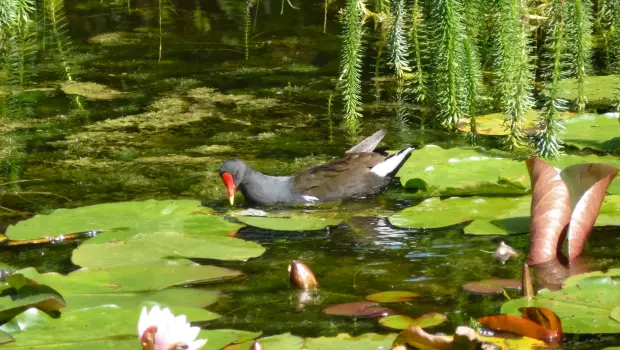Aquatic Plants in Your Greenhouse
Growing Aquatic Plants in Your Greenhouse
Water plants that have graced your pond during the summer months can easily be moved to your greenhouse to survive the winter months. Without this opportunity aquatic plants will die and they will need to be replaced every season.
Prepare an area in the greenhouse to build an indoor pond. Dig the ground about four feet deep and construct a border around it. To do this you can use railroad ties or stones. Or, store you pond plants in a large barrel.
If you do build a pond within the greenhouse, stone borders can be created with any type or size of rocks. Build a foundation by digging the ground about a foot deep. Using stone can be expensive and although rock structures look great, we suggest that you save your resources for outdoors where the pond creation can be appreciated. Railroad ties or recycled materials will work well in the greenhouse and are more economical.
The water will need to be kept warm and the ground underneath the pond will help hold the heat. You may require a pond heater. If the greenhouse is well insulated, covering the pond at night might be enough to keep the water warm and the plants thriving, depending on your outside temperatures.
In smaller ponds growing aquatic plants in containers will prevent them from growing too large and becoming intimidating. Aquatic baskets have lattice sides with fine mesh to hold the soil in place. For larger plants stones can be placed at the base of the container for strength and stability.
Fill the container with compost. Avoid using plant soil that contains any chemicals or fertilizer in case some of it bleeds into the water. Plant the aquatic deep into the soil unless it has a rootstalk (horizontal stem) in which case it should be planted above the soil surface. New plants should be raised in the pond so that they are not completely submerged. As the leaves grow they can be lowered.
Floating aquatics can be placed on the water’s surface after separating the clusters. Keep a reasonable distance away from other plants.
To maintain healthy aquatic plants be careful of weeds that grow and quickly take over the pond. They can root in the mud and overpower the entire surface of the water area blocking the sun’s rays from the plants that need them. Weeds should be removed immediately and composted or buried.
Aquatic plants brighten up any garden and their exotic features are a good representation of nature at its finest.










